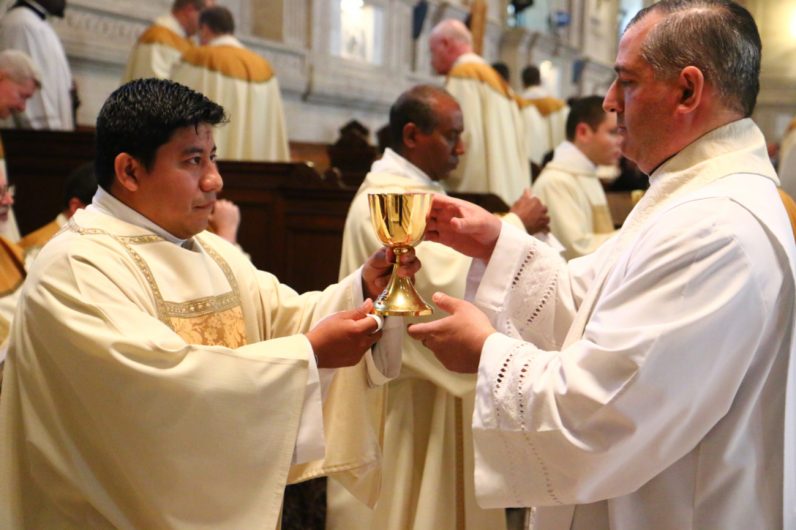As I have often said, Christianity is about Christ. It is not about the buildings. If there is anything to be learned about this pandemic, it is that a church building can be taken away from us. But Christ cannot be taken away from us. It would be prudent to prepare for the taking away of the church buildings. Why? Because the Archdiocese is currently facing lawsuits after lawsuits for allegations of child sexual abuse. In the future, some of those church buildings may be sold. So, if there is anything this pandemic has taught, it is not to turn sacred objects into idols. Those sacred objects are to be respected, but God alone is to be adored and worshiped.
The tabernacle in our church building is sacred, but Catholics do not worship the tabernacle. It is what is inside the tabernacle that we worship. In the Old Testament, the Israelites also did not worship the tabernacle. They understood that it was the dwelling place of God and therefore sacred and worthy of respect and honor. The Israelites worshiped what the tabernacle contained - God Himself.
In the New Testament, the New Ark of the Covenant is not made of finest gold as the old one was. The New Ark of the Covenant was Mary (see my article here). Catholics do not worship Mary, the New Ark of the Covenant. We worship God and God alone. During the pandemic, it was not the church building that Catholics miss because the Protestants were correct when they say that we can worship God anywhere. So long as there are two or three gathered in my name, so there I am also in the midst of them (Matthew 18:20). When Mass was offered in the parking lot, people rejoiced because they received Holy Communion. We attend Church to receive His Body and Blood so that we be one with Christ. It was never about the building. It was about the Eucharist, the receiving of the Body and Blood of our Lord. Even Archbishop Michael understood this clearly. According to the Pacific Daily News:
In a pastoral letter to Catholics, Brynes wrote that the decision wasn't taken lightly as the Holy Eucharist is the source and summit of the Catholic faith.The Eucharist is the source and summit of the Catholic faith, not the church building.
In the Old Testament, the Jewish Temple was the cornerstone, both literally and figuratively, of Jewish worship. In the New Testament, the Christian body is the temple where the Holy Spirit dwells and Christ is the chief cornerstone (Acts 4:10-12). In the Old Testament, the Ark of the Covenant was made of finest materials and pure gold. In the New Testament, the new Ark of the Covenant was Mary. A created being became a living tabernacle of our Lord Jesus Christ. Mary was the fulfillment of the Ark who took the joy, power, and presence of Jesus wherever she went.
When we receive the Body of Christ in Holy Communion, we also become living tabernacles like Mary. As living tabernacles, we are to take Jesus into the world, allowing His presence in us to shine before others so that they too will believe and worship the one true God. It is for this purpose that Christ built His Church, which is not a building made of stone. Jesus told us to worship Him in "Spirit and in truth". What does that mean? According to the Catechism of the Catholic Church:
CCC 1179 The worship "in Spirit and in truth" of the New Covenant is not tied exclusively to any one place. The whole earth is sacred and entrusted to the children of men. What matters above all is that, when the faithful assemble in the same place, they are the "living stones" gathered to be "built into a spiritual house." For the Body of the risen Christ is the spiritual temple from which the source of living water springs forth: incorporated into Christ by the Holy Spirit, "we are the temple of the living God."


